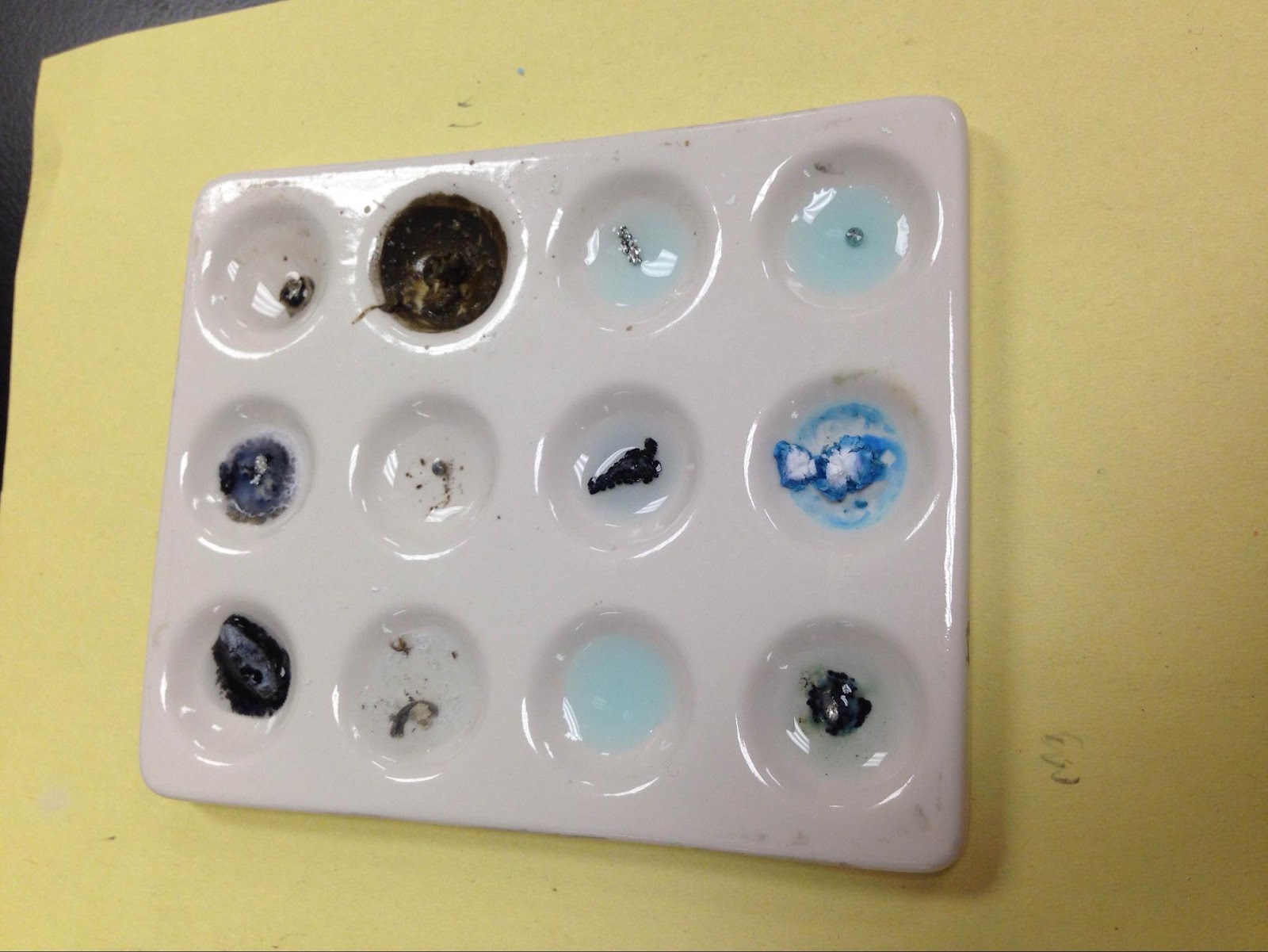In class we took notes over limiting reagents and excess reagents in chemical reactions. The limiting reagent is the reactant that runs out first when the product is being formed. Therefore, the maximum amount of the product that can be formed is equivalent to the limiting reagent. On the other hand, excess reagents are the reactants that are left over after the product has been formed in the chemical reaction. I found this link to be helpful in understanding limiting and excess reagents. In order to figure out which reactant is the limiting and excess reagent you have to convert both reactants into the product using given masses, moles, or representative particles. Whichever reactant converts to the lower amount of the product is the limiting reagent and the higher amount is the excess reagent. After calculating out which reactant is the limiting reagent, we can use that amount to determine the amount of the excess reagent that remains. Taking the amount the limiting reagent formed of the product, you convert it to the excess reagent and find the difference between it the given mass or moles. I found this link helpful to practice these problems.
Tuesday, December 15, 2015
Copper Chloride and Iron Lab
We finished our Copper (II) Chloride lab in class today. We started the lab by adding Copper (II) Chloride to water in a baby food jar. Once all of the Copper (II) Chloride was dissolved, a nail was placed in the solution. This nail stayed in the solution overnight and then was removed, rinsing the copper into the baby food jar. Next we drained the liquid out of the baby food jar and then rinsed it with hydrochloric acid and water. This link helped when we were trying to figure out what charge of iron was in our reaction.
Monday, December 14, 2015
Percent Yield
Our newest subject in stoichiometry is the percent yield of a chemical reaction. In order to calculate percent yield, the actual yield has to be given within the problem. The formula for percent yield is (actual yield/theoretical yield) x100 . Calculating the theoretical yield requires converting the limiting reagent into the desired product of the reaction. I found this link to be helpful in understanding and calculating percent yield.
Wednesday, December 9, 2015
Stoichiometry
In class, we took our first set of notes on stoichiometry. This link was helpful in understanding the concept of stoichiometry and stoichiometry problems. We learned how to convert a given mass of a reactant into the mass of product, or using the mass desired mass of the product, calculating how much of a reactant is needed. This link helped me to practice these mass to mass conversions.
Friday, December 4, 2015
Redox Reactions
In redox reactions, electrons are transferred from the metal to the non-metal. If a species loses electrons it is oxidized; whereas, if a species gains electrons it is said to be reduced. An easy way to remember the difference between oxidation and reduction is OIL RIG. OIL RIG stands for Oxidation Is Loss and Reduction Is Gain, applying to the transfer of electrons that takes place during these reactions. The species that is oxidized in a redox reaction is also called the reducing agent. Similarly, the specie that is reduced in a redox reaction is also called the oxidizing agent.
Single-replacement
In a single-replacement reaction, the metals in the reactants change places. These reactions are based on reactivity series which show metals from most reactive to least reactive.
Synthesis
A synthesis reaction occurs when two or more reactants form one product.
Decomposition
Decomposition is a reaction in which one reactant produces two or more products.
Combustion
When a hydrocarbon reacts with oxygen in order to always produce carbon dioxide and water, it is a combustion reaction.
I found This to be helpful in practicing redox reactions
Some practice for Classifying reactions was helpful as well
These Practice Redox problems were beneficial in understanding this concept as well
Single-replacement
In a single-replacement reaction, the metals in the reactants change places. These reactions are based on reactivity series which show metals from most reactive to least reactive.
Synthesis
A synthesis reaction occurs when two or more reactants form one product.
Decomposition
Decomposition is a reaction in which one reactant produces two or more products.
Combustion
When a hydrocarbon reacts with oxygen in order to always produce carbon dioxide and water, it is a combustion reaction.
I found This to be helpful in practicing redox reactions
Some practice for Classifying reactions was helpful as well
These Practice Redox problems were beneficial in understanding this concept as well
Wednesday, December 2, 2015
Chemical Reactions Lab
In class, we were able to perform a chemical reactions lab in order to determine the reactivity series of the different elements. After determining the reactivity series for the different metals, we calculated the net ionic equations of the reactions that occurred during the lab. The reactivity series goes from the most reactive on the top, to the least reactive on the bottom. Those that are higher up on the reactivity series react more with other metals; whereas, those on the bottom react with less metals.

Subscribe to:
Posts (Atom)





